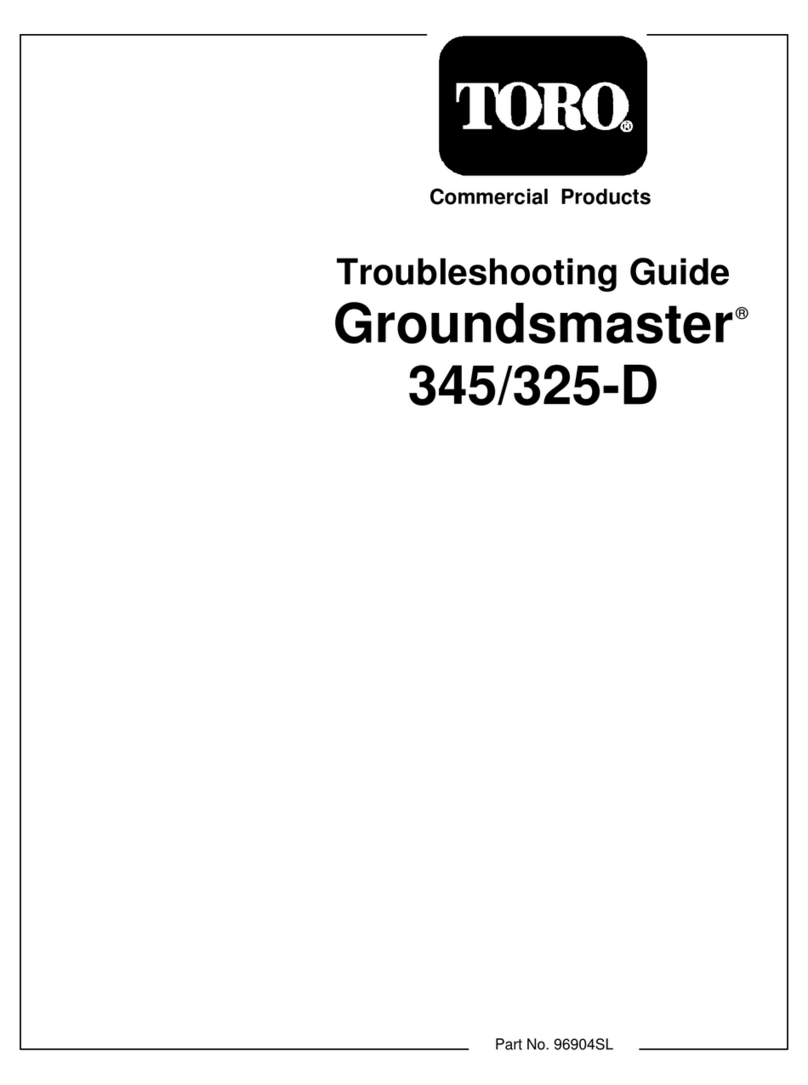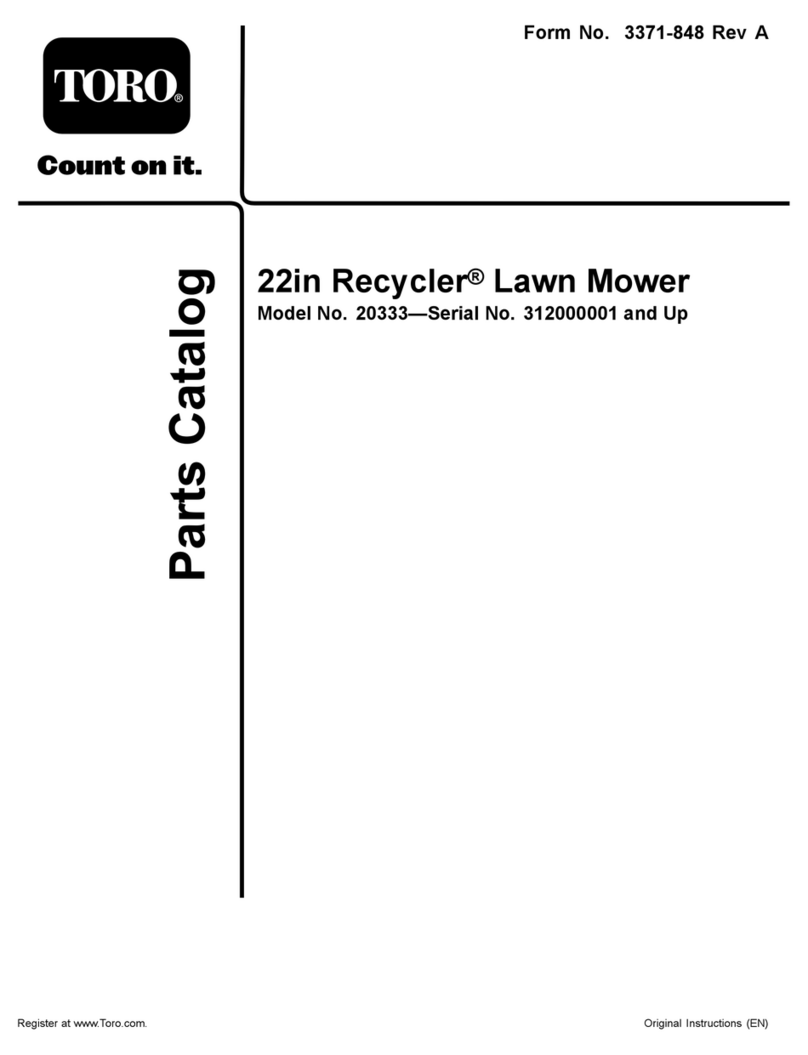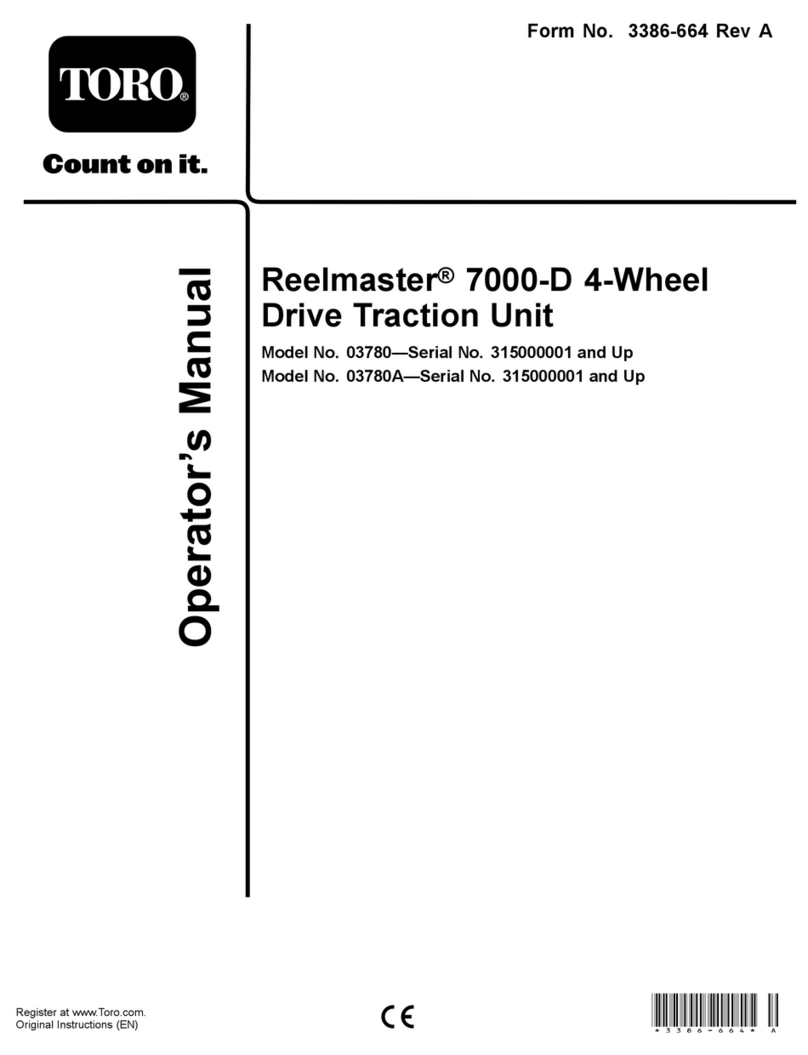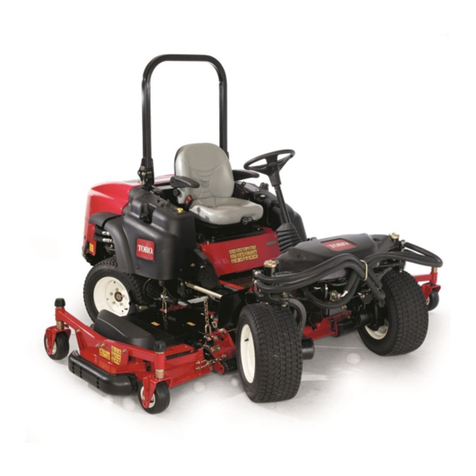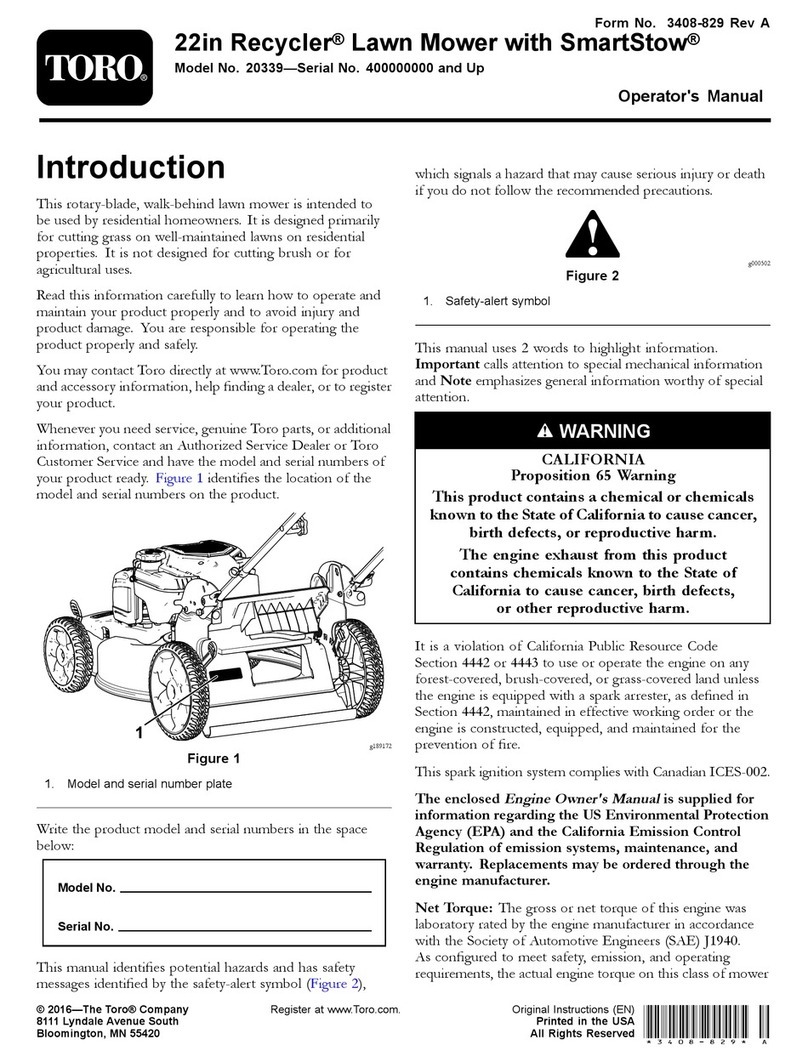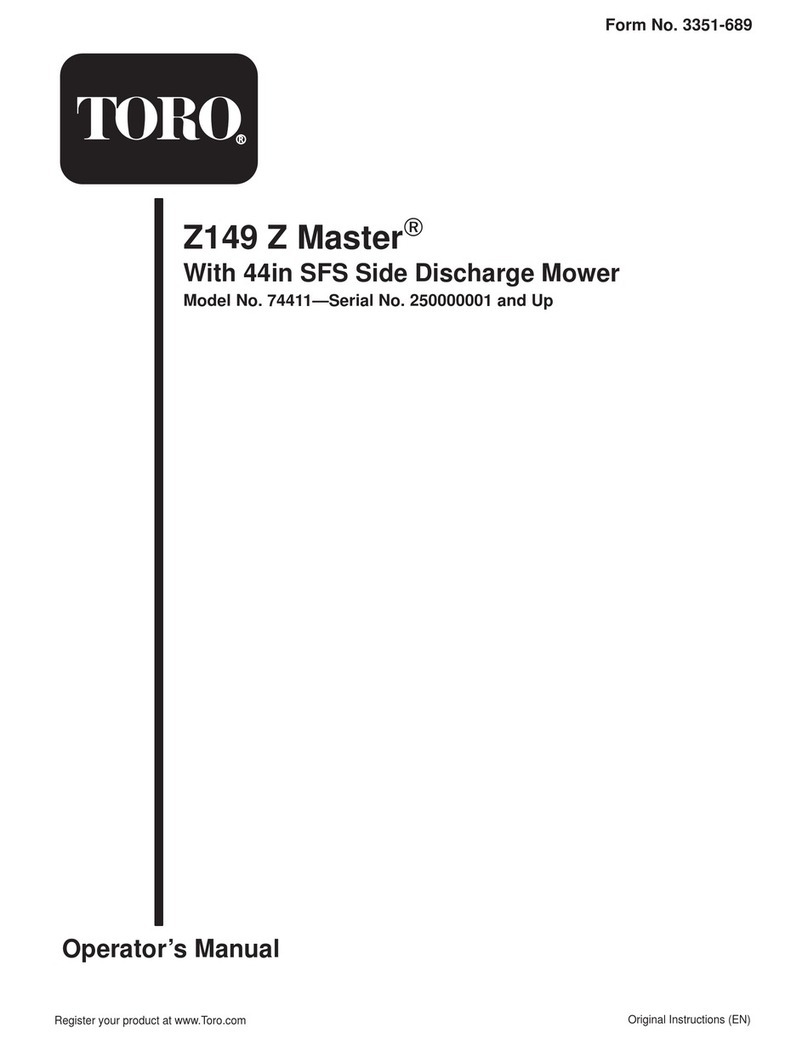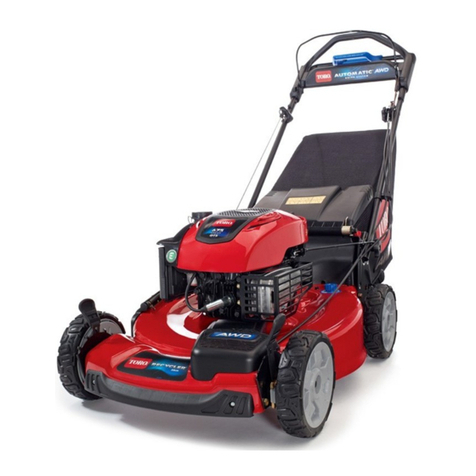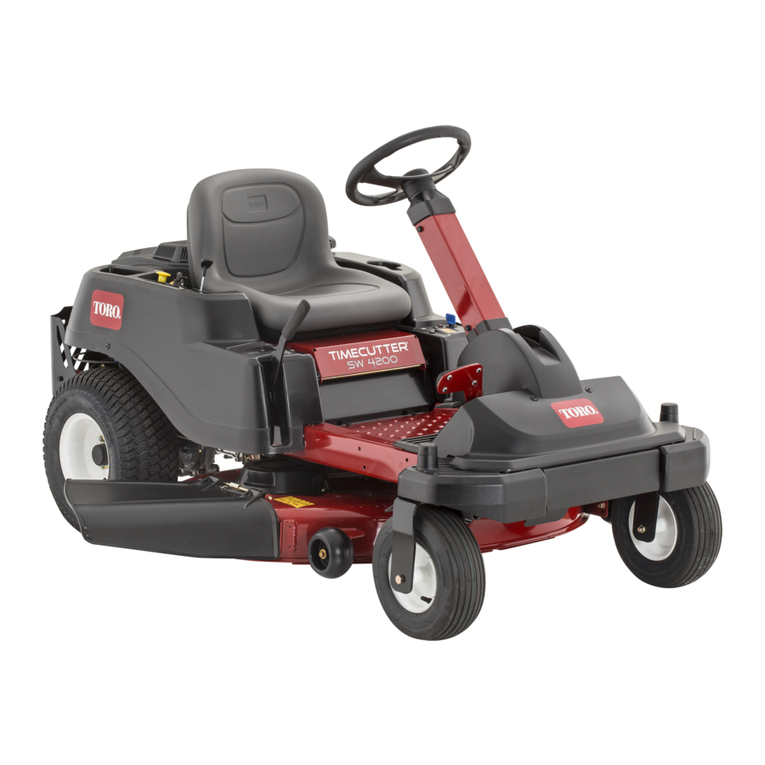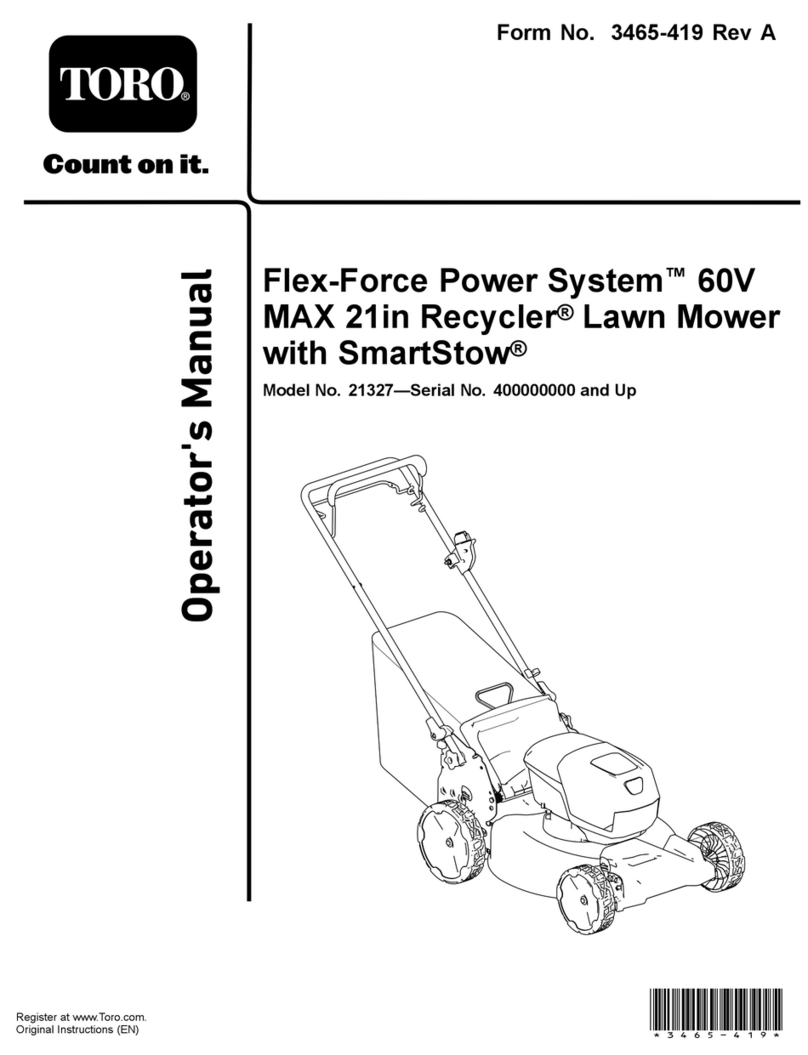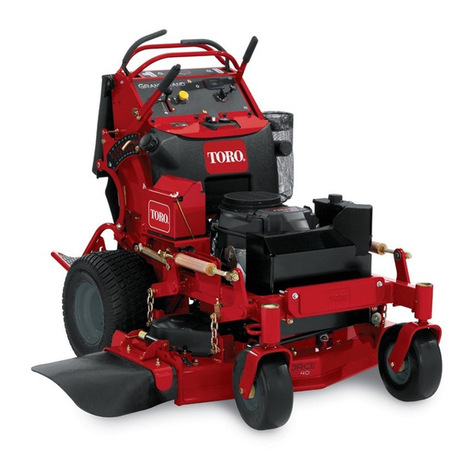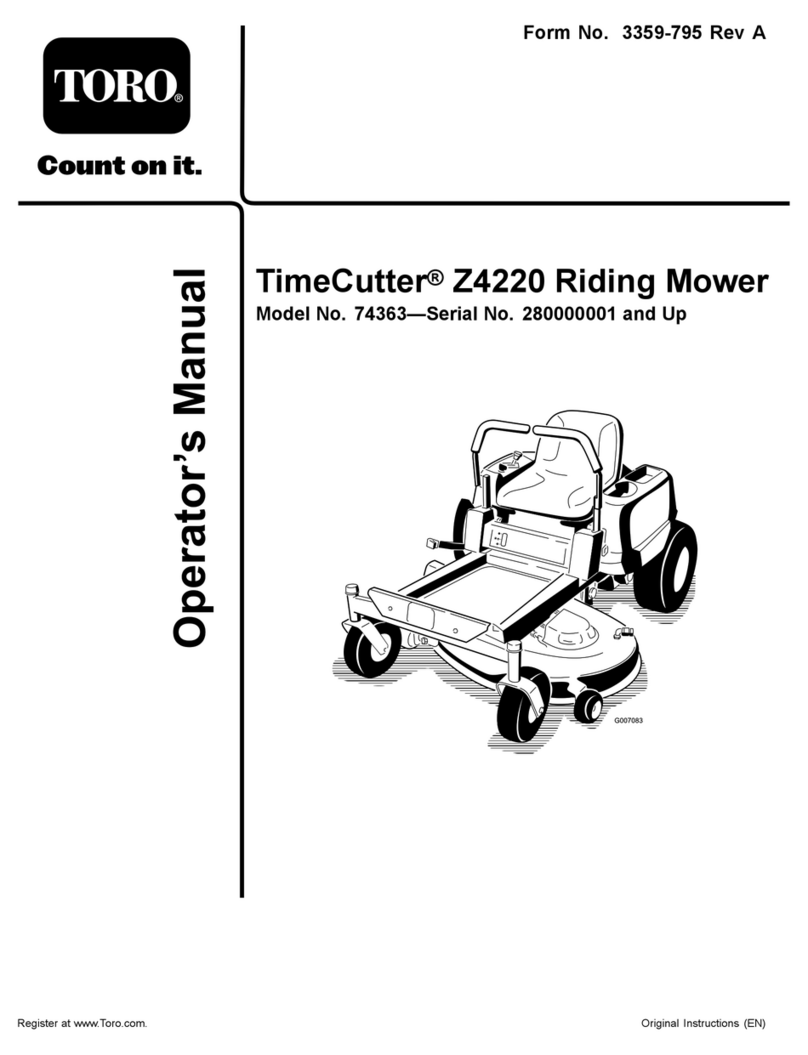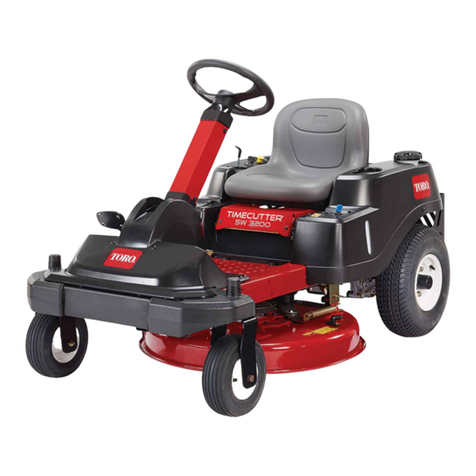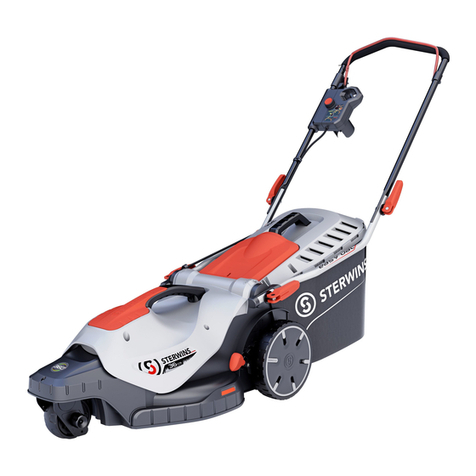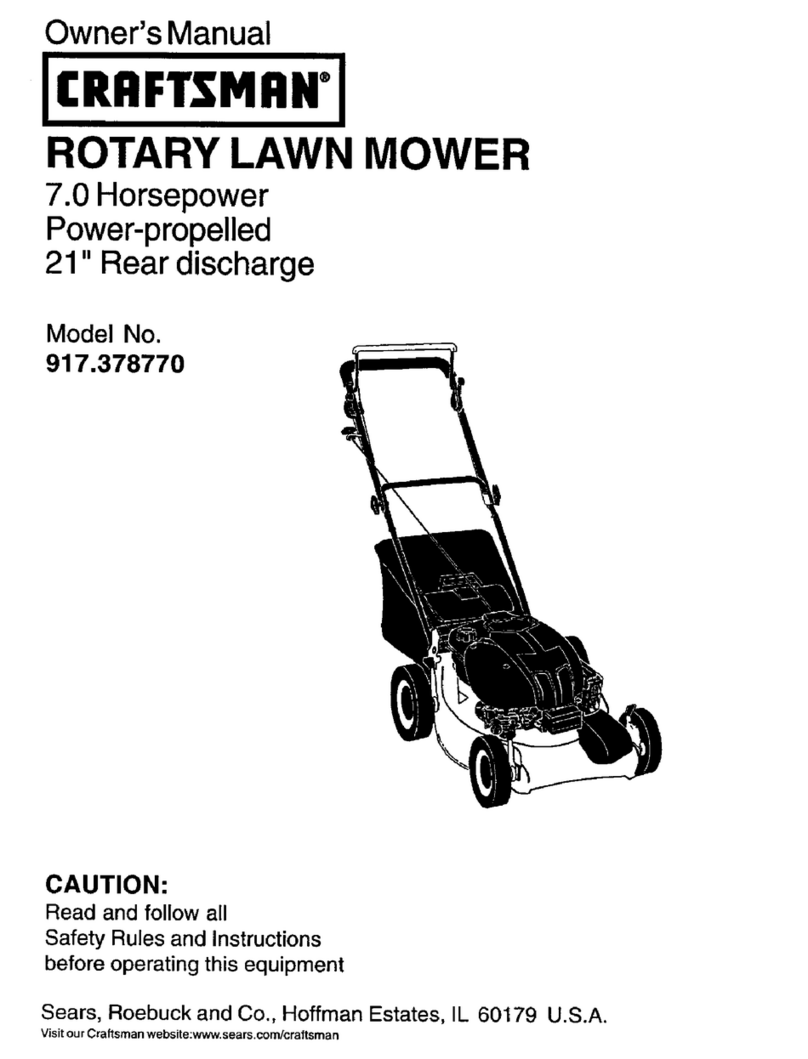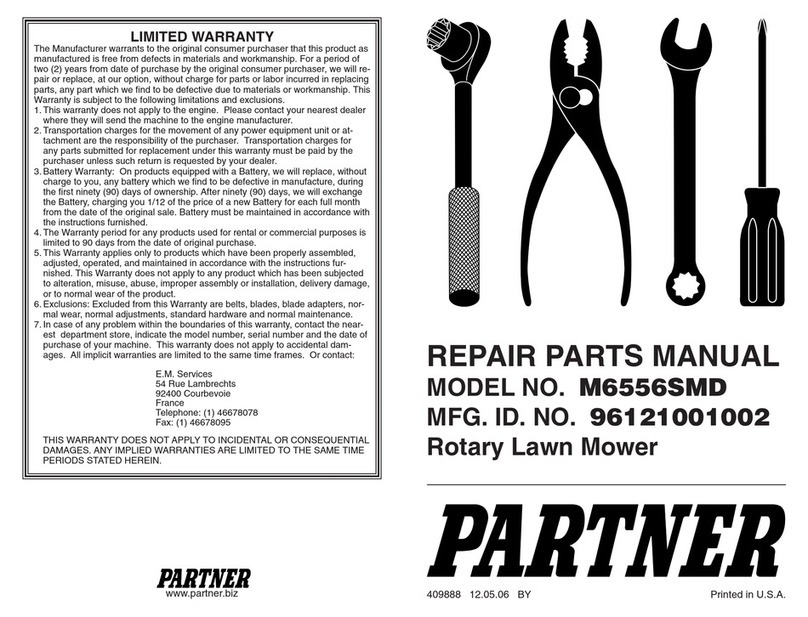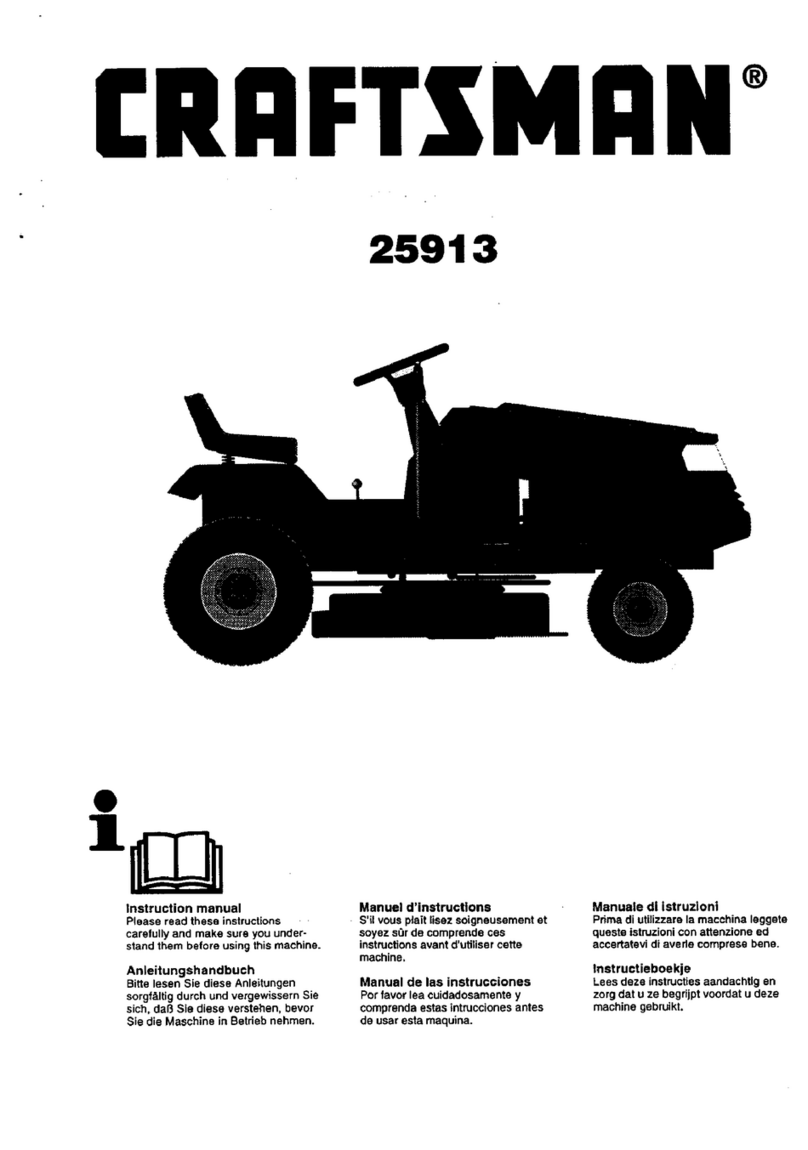
2
All Rights Reserved
Printed in the USA
2003 by The Toro Company
8111 Lyndale Avenue South
Bloomington, MN 55420-1196
Contents
Page
Introduction 2. . . . . . . . . . . . . . . . . . . . . . . . . . . . . . . .
Safety and Instruction Decals 3. . . . . . . . . . . . . . . .
Setup 4. . . . . . . . . . . . . . . . . . . . . . . . . . . . . . . . . . . . .
Loose Parts 4. . . . . . . . . . . . . . . . . . . . . . . . . . . . . .
Installing the Grass Deflector on 42 and 48 inch Side
Discharge Mowers 4. . . . . . . . . . . . . . . . . . . . . . .
Installing the Grass Deflector 52 inch Mowers 5. .
Installing the Mower 5. . . . . . . . . . . . . . . . . . . . . .
Checking the Side-to-Side Blade Cut 8. . . . . . . . . .
Adjusting the Side-to-Side Blade Cut 8. . . . . . . . .
Checking the Front-to-Rear Blade Slope 8. . . . . . .
Changing the Front-to-Rear Blade Slope 9. . . . . . .
Transport Height Adjustment 9. . . . . . . . . . . . . . . .
Operation 10. . . . . . . . . . . . . . . . . . . . . . . . . . . . . . . . . .
Using the Side Discharge 10. . . . . . . . . . . . . . . . . . .
Operating the Power Take Off (PTO) 10. . . . . . . . . .
Using the Attachment Power Lift 11. . . . . . . . . . . . .
Operating the Attachment Lift Lever 11. . . . . . . . . .
Adjusting the Height of Cut 11. . . . . . . . . . . . . . . . .
Removing the Mower 12. . . . . . . . . . . . . . . . . . . . . .
Tips for Mowing Grass 13. . . . . . . . . . . . . . . . . . . . .
Maintenance 14. . . . . . . . . . . . . . . . . . . . . . . . . . . . . . . .
Recommended Maintenance Schedule 14. . . . . . . . .
Servicing the Cutting Blades 14. . . . . . . . . . . . . . . .
Greasing and Lubrication 16. . . . . . . . . . . . . . . . . . .
Removing the Hood 17. . . . . . . . . . . . . . . . . . . . . . .
Servicing the Mower Belt 17. . . . . . . . . . . . . . . . . . .
Replacing the Power Take Off (PTO) Belt 17. . . . . .
Replacing the Mower Drive Belt 18. . . . . . . . . . . . .
Cleaning and Storage 18. . . . . . . . . . . . . . . . . . . . . .
Troubleshooting 19. . . . . . . . . . . . . . . . . . . . . . . . . . . . .
The Toro Total Coverage Guarantee 20. . . . . . . . . . . . .
Introduction
Read this manual carefully to learn how to operate and
maintain your product properly. The information in this
manual can help you and others avoid injury and product
damage. Although Toro designs and produces safe
products, you are responsible for operating the product
properly and safely.
Whenever you need service, genuine Toro parts, or
additional information, contact an Authorized Service
Dealer or Toro Customer Service and have the model and
serial numbers of your product ready. Figure 1 illustrates
the location of the model and serial numbers on the
product.
1
m–2828
Figure 1
1. Location of the model and serial numbers
Write the product model and serial numbers in the space
below:
Model No.
Serial No.
This manual identifies potential hazards and has special
safety messages that help you and others avoid personal
injury and even death. Danger, Warning, and Caution are
signal words used to identify the level of hazard. However,
regardless of the hazard, be extremely careful.
Danger signals an extreme hazard that will cause serious
injury or death if you do not follow the recommended
precautions.
Warning signals a hazard that may cause serious injury or
death if you do not follow the recommended precautions.
Caution signals a hazard that may cause minor or moderate
injury if you do not follow the recommended precautions.
This manual uses two other words to highlight information.
Important calls attention to special mechanical
information and Note: emphasizes general information
worthy of special attention.
